Favorite Moments - UPDATE January 9, 2024

Raven pair touching beaks
Fisher
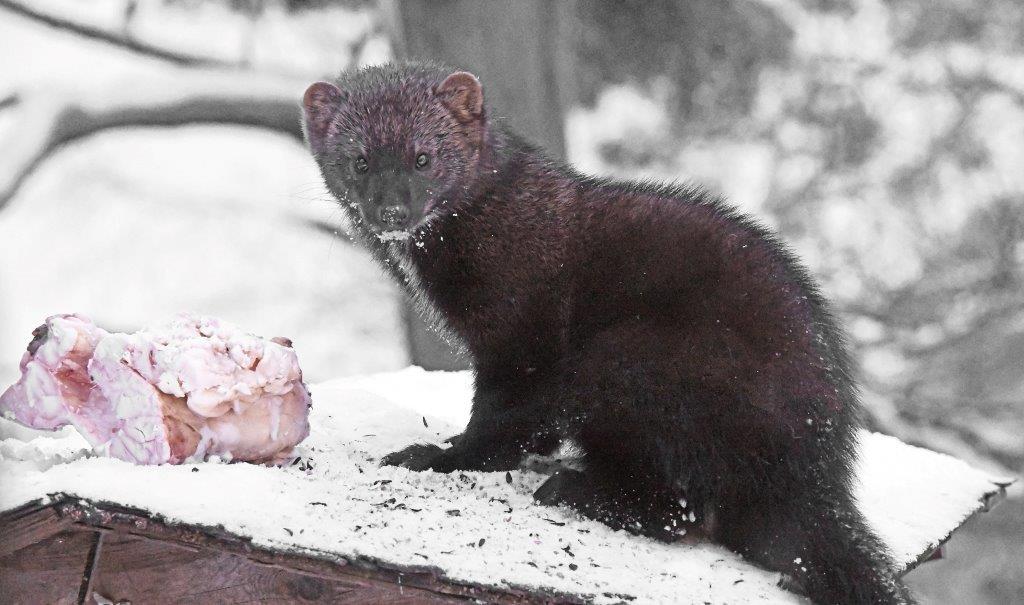
Fisher
Fisher

Fisher getting a good look
The fisher was tantalizing the first two times I saw him or her so very briefly. Then yesterday he was here to be seen, and he was spectacular with his big bright chest blaze as he walked across the yard, standing up frequently to scan ahead. I went downstairs to get a better look and he’d disappeared. Red squirrel
Red squirrel
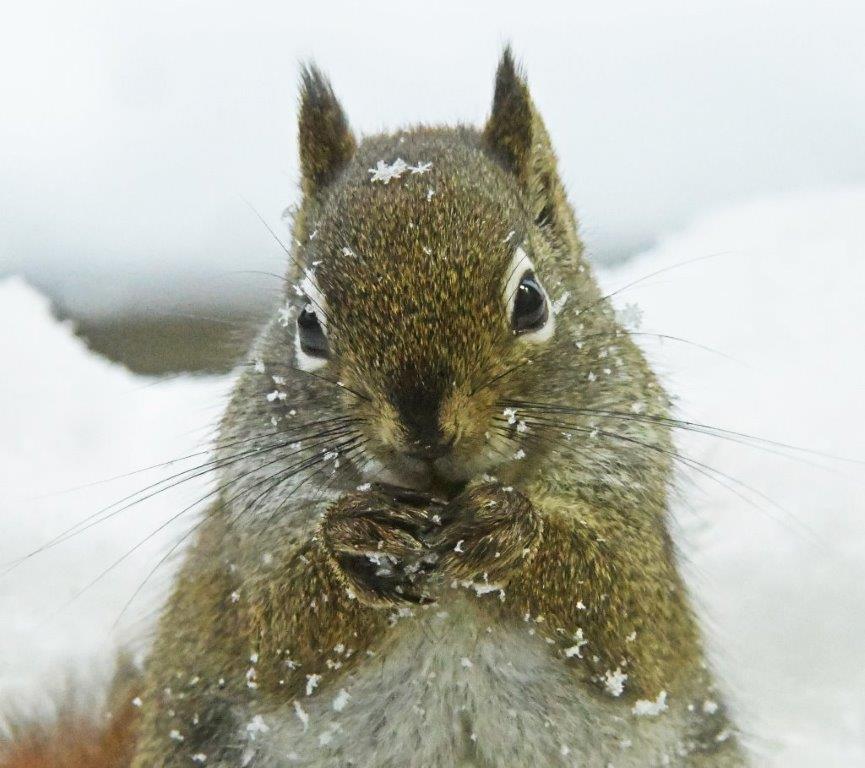
Then he came down the tree from the second floor deck. I should have stayed up at my desk. But after giving me some photo ops he went back up and showed me what he wanted. He took the last piece of beef fat. Later, he was back and had a turn with the suet. I hope he keeps coming. Maybe eventually I’ll find out if he is a he or a she.
Another favorite moment was seeing ravens enjoying closeness as a pair. This was a pair in which the male has the usual black chest without the white spots the other male has. The picture shows him and his mate facing each other to gently touch beaks. He has his eyebrow feathers sharply raised which I think in this situation shows excitement as they gently interact.
Deer dinner bell
Deer dinner bell
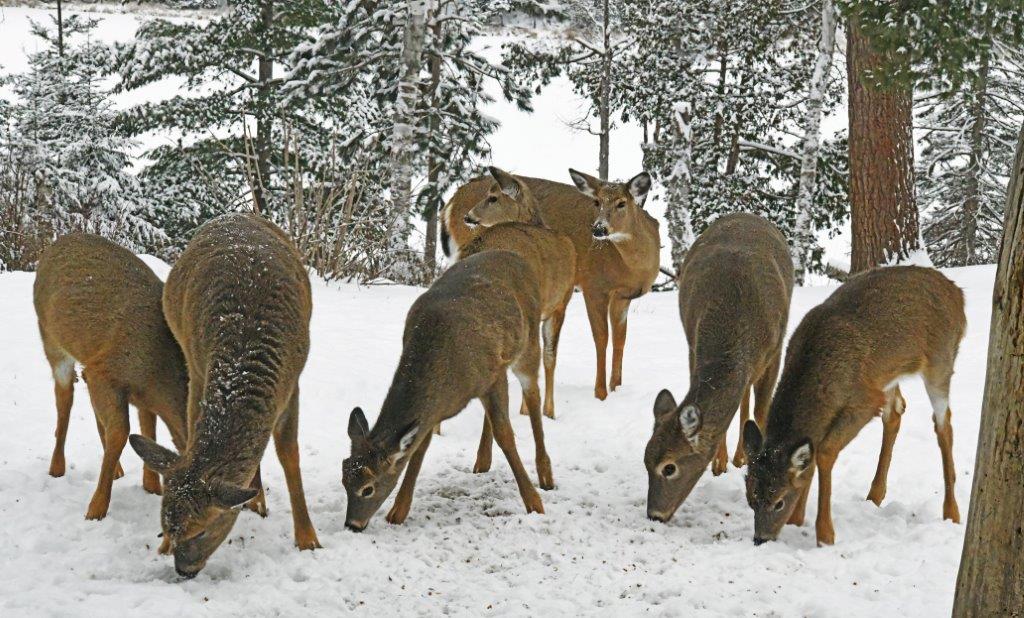
Another moment showed me that the sound of peanuts (no shells) sliding off the scoop is a dinner bell. Two deer were in the yard looking up at me on the second floor deck as if to say “Please Mr. Human, could you throw us some peanuts?” I did, and I was amazed at what immediately happened. Ten more came hurrying out of the woods from three directions to converge on the scattered peanuts. The picture shows seven of the twelve. With that many deer, I threw two more big scoops. I’m guessing with half a foot of snow on the ground, it’s harder for them to find greens.
Chickadee
Chickadee
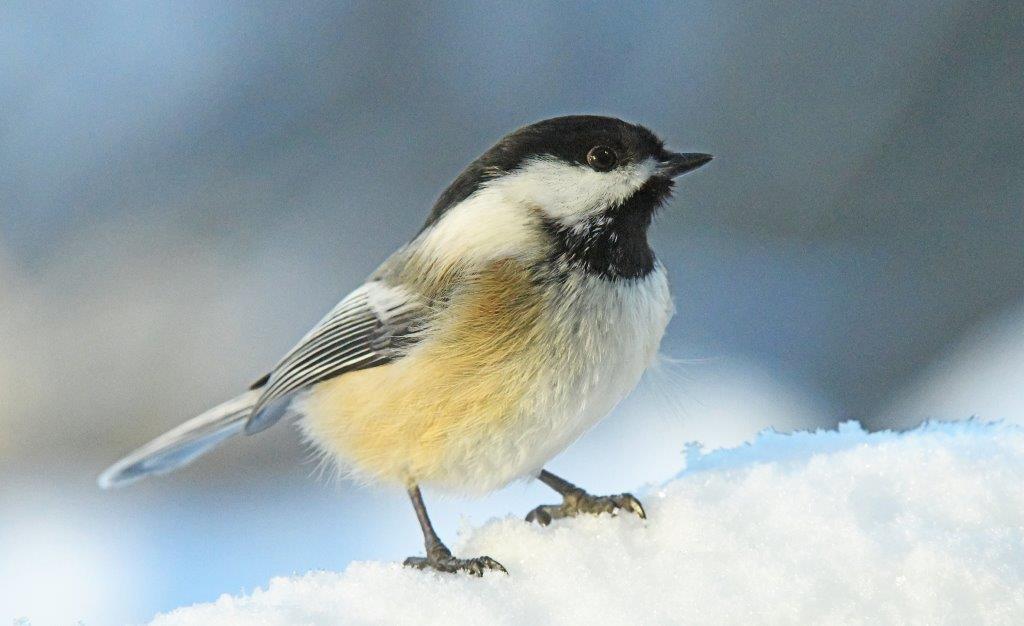
Chickadee wings
Chickadee
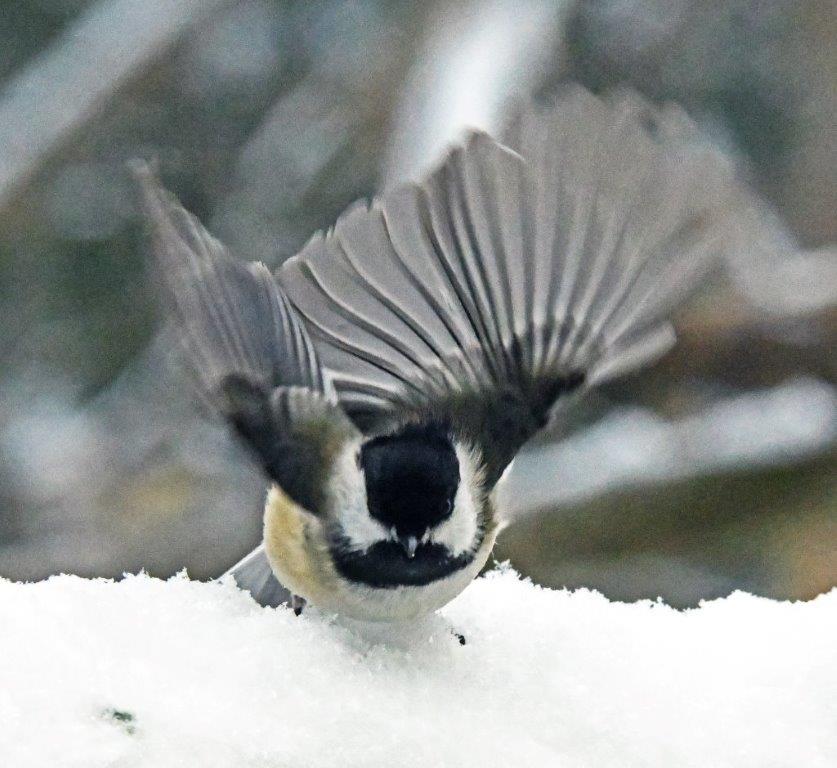
Chickadee numbers have grown. What brings them flying in is sunflower seeds, especially seeds without shells, which they have to share with red squirrels by day and unknowingly share with flying squirrels at night while the chickadees are sleeping.
It’s a wonderful world.
Thank you for all you do,
Lynn Rogers, Biologist, Wildlife Research Institute and North American Bear Center
